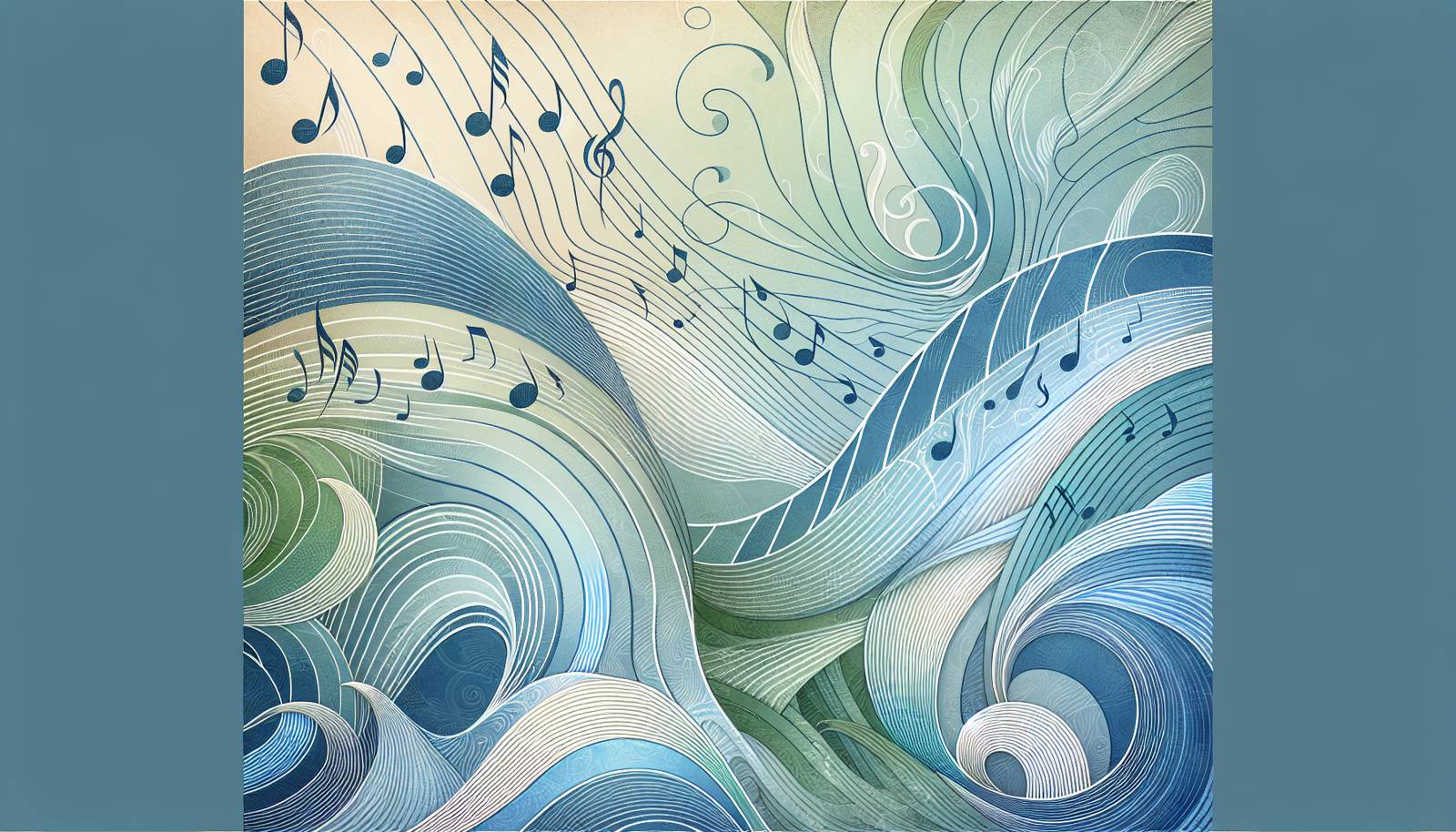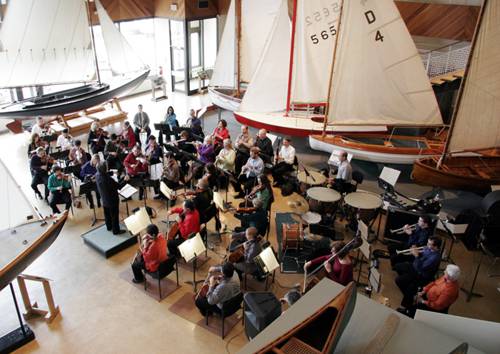
FAQ About Role of Maritime Music in Cultural Identity

What is maritime music and why is it important?
Maritime music encompasses the traditional songs and tunes linked to sailors and the sea. This includes sea shanties, nautical ballads, and various folk songs that have been hummed, sung, and played by sailors throughout history. These songs are important as they have served multiple purposes such as boosting morale, coordinating labor aboard ships, and preserving the stories and experiences of life at sea. Maritime music has been instrumental in shaping cultural identity among seafaring communities and continues to influence modern music genres.

How did sea shanties contribute to shaping cultural identities?
Sea shanties were more than mere work songs; they were a way for sailors to create a shared identity and culture. By singing these songs, sailors of different backgrounds and ethnicities could forge a collective identity on the high seas. Sea shanties preserved the sailors' stories, experiences, and emotions, thus encapsulating their unique culture. These songs often included local dialects and references, embedding cultural nuances that were specific to the maritime communities.”

What are the main themes addressed in maritime songs?
Maritime songs typically address themes such as adventure, love, hardship, and the longing for home. They often capture the harsh realities of sea life, including weather conditions, battles with the ocean, and the separation from loved ones. Many songs express admiration for ships and the sea, while others describe pirate adventures or are penned as dirges for sailors lost at sea. Each theme provides insight into the life and times of seafaring communities.

What is a sea shanty and how does it differ from other maritime songs?
A sea shanty is a type of work song that was once commonly sung to accompany labor aboard large merchant sailing vessels. Its primary purpose was to synchronize the physical actions of sailors to accomplish tasks more efficiently. Shanties differed from other maritime songs, which might have been sung during leisure time or focused more on storytelling. Shanties usually have a call-and-response structure, making them uniquely effective for coordinating teamwork among sailors.

How have sea shanties influenced contemporary music genres?
Sea shanties have had a remarkable influence on various contemporary music genres. Their rhythmic call-and-response patterns can be seen in today’s pop, rock, and folk music. Shanties have influenced the storytelling style and melodic structures of these genres. Moreover, the revival of interest in folk and traditional music has led some modern artists to incorporate shanty rhythms and themes directly into their music, creating crossover genres like folk-rock or maritime folk.

Why did sea shanties experience a resurgence in popularity in recent years?
Sea shanties experienced a resurgence in popularity recently, largely due to the viral spread of "ShantyTok" on the TikTok platform. This was fueled by a communal desire for social connection during the COVID-19 pandemic. People resonated with the themes of camaraderie and shared labor expressed in shanties, and social media provided a perfect platform for collaborative singing, propelling these old maritime tunes back into the cultural spotlight.

How do maritime songs contribute to storytelling traditions?
Maritime songs are a powerful medium for storytelling, capturing detailed accounts of sailors’ lives, adventures, and challenges. Through ballads and shanties, maritime songs narrate stories about historical events, legendary figures, and the everyday experiences of seafarers. This oral tradition helps preserve the cultural heritage of maritime communities, passing down valuable knowledge and emotional narratives from one generation to the next.

What role did maritime music play aboard ships historically?
Historically, maritime music played a crucial role aboard ships. It was used to synchronize work tasks, maintain morale during long and arduous voyages, and alleviate the monotony of sea travel. Singing was often employed to lighten the load of physical labor, helping sailors to work in unison, while simultaneously providing entertainment and building camaraderie among crew members.

Can maritime songs vary significantly between different cultures?
Yes, maritime songs can vary significantly between different cultures as they often reflect the unique experiences, languages, and musical traditions of individual communities. While the function of these songs may be similar, the lyrics, melodies, and themes can differ greatly, offering a fascinating insight into the diverse maritime histories and cultural identities around the world.

What impact did maritime music have on coastal communities?
Maritime music had a profound impact on coastal communities by weaving together a shared cultural heritage that transcended generations. These songs helped to strengthen community ties, as they often conveyed local lore, celebrated maritime achievements, and addressed communal concerns. By encapsulating the spirit of the sea, maritime music fostered a deep sense of identity and continuity among coastal populations.

How are sea shanties structured musically?
Sea shanties are typically structured in a call-and-response format. This involves a solo leader, known as the shantyman, singing the verse or lead line, followed by a group of sailors joining in the chorus. This call-and-response style was not only engaging but also functional, helping synchronize rhythmic work aboard ship. The melodies are usually simple, making them easy for groups to memorize and perform.

Are sea shanties and maritime songs still relevant today?
Yes, sea shanties and maritime songs continue to be relevant today. They are celebrated in folk music circles, shanty festivals, and maritime museums. These songs provide historical insight into the lives of sailors and their cultural heritage, influencing contemporary music and fostering community through their timeless themes of collaboration and adventure.

What instruments are commonly associated with maritime music?
Maritime music often includes instruments that were portable and practical for use on ships. Common instruments included the fiddle, accordion, concertina, penny whistle, and banjo. These instruments helped accompany songs and added a lively musical backdrop to sailors' duties and leisure activities aboard ships. The simplicity and portability of these instruments made them perfect companions for sailors at sea.

How do performances of maritime music today compare to historical practices?
Performances of maritime music today often take on a more polished and performative role compared to their historical origins. While once sung primarily for practical purposes aboard ship, today's renditions can be folk concerts or part of cultural festivals. Edits for modern audiences may include richer instrumentation or fusion with other music styles, but many groups aim to preserve the authentic feel of traditional maritime music as a nod to its origins.

How did sea shanties vary between different maritime industries?
Sea shanties varied between different maritime industries as each type of labor required specific rhythms and themes. For instance, whaling vessels had unique shanties reflecting the perilous nature of whaling, while others were geared towards the rhythmic needs of hauling sails on merchant ships. This specialization not only facilitated work but also enriched the cultural repertoire with songs relevant to each maritime trade.

What is the difference between a ballad and a shanty in maritime music?
In maritime music, a ballad is typically a narrative song that tells a story, often related to high-seas adventures or historical events. Ballads focus on the lyrical content and are usually sung outside of work settings. In contrast, shanties are work songs designed for synchronizing maritime labor, with a simple call-and-response structure that helps coordinate sailors' efforts.

Why were some sea shanties forbidden aboard certain ships?
Some sea shanties were forbidden aboard certain ships due to their potentially lewd or bawdy nature. Captains worried such content might undermine discipline, or incite run-ins with superstitions by referencing bad luck or mutinous themes. This censorship reflected attempts to maintain order and professionalism on board, showing the delicate balance between sailors' entertainment needs and ship governance.

Can modern maritime musicians create new shanties authentically?
Yes, modern maritime musicians can create new shanties authentically by adhering to the traditional call-and-response format and incorporating relevant maritime themes. Many contemporary musicians draw inspiration from historical events or current maritime issues. By grounding new compositions in established traditions and practices, they help keep the genre vibrant and evolving.

Are there festivals dedicated to maritime music?
Yes, there are numerous festivals dedicated to maritime music held around the world. These festivals celebrate the rich heritage of maritime songs and shanties, featuring performances, workshops, and communal singing events. They serve as a cultural meeting point for enthusiasts and musicians alike, fostering appreciation and awareness of maritime music traditions.

How can learning about maritime songs enrich one's understanding of history?
Learning about maritime songs enriches one's understanding of history through the vivid depiction of sailors' lives, struggles, and achievements. These songs offer a lens into past maritime industries, cultural exchanges across oceans, and the personal tales of seafarers. By exploring maritime music, one gains insight into the collective memory and cultural legacy of those who traversed the seas.
